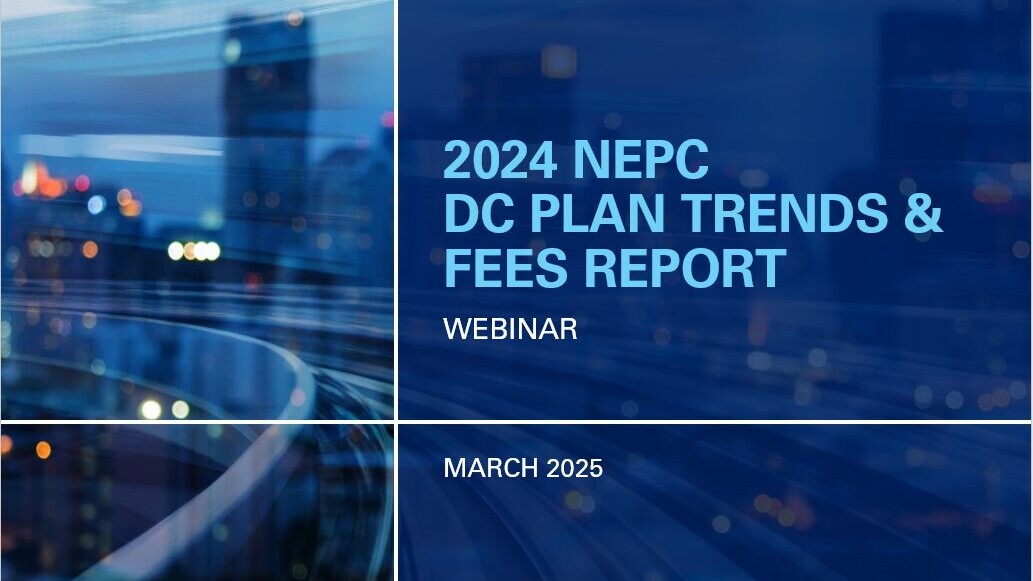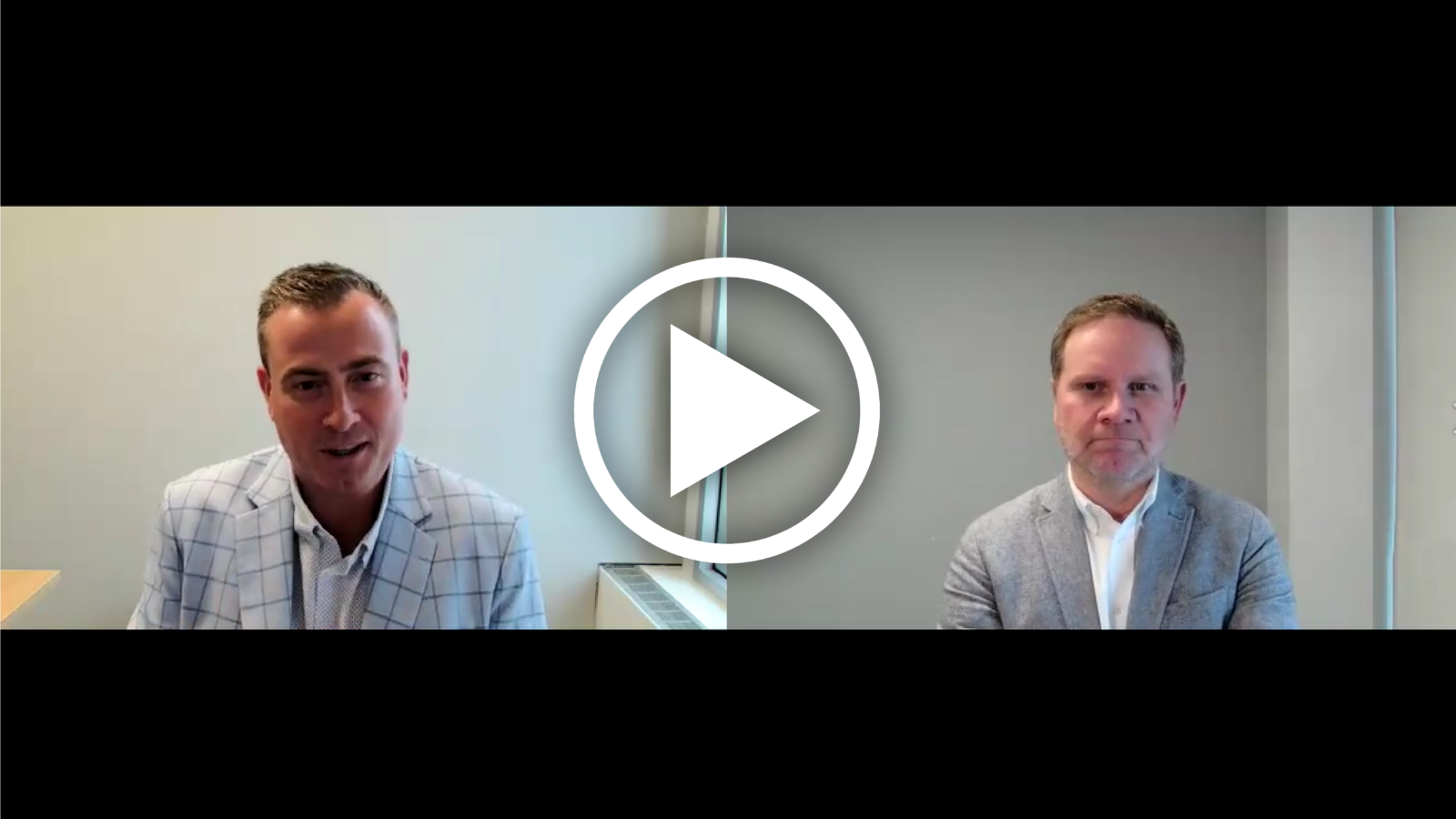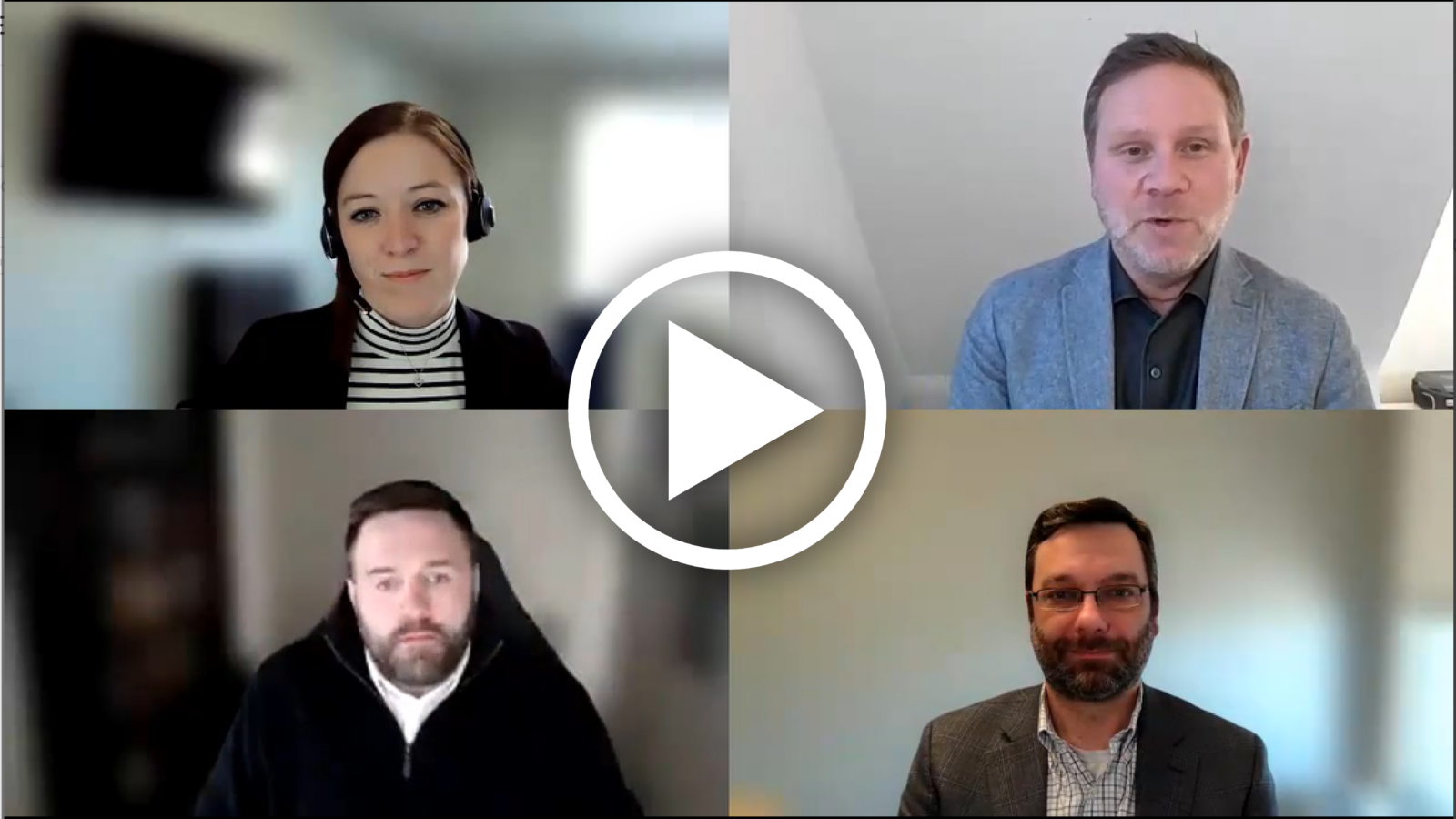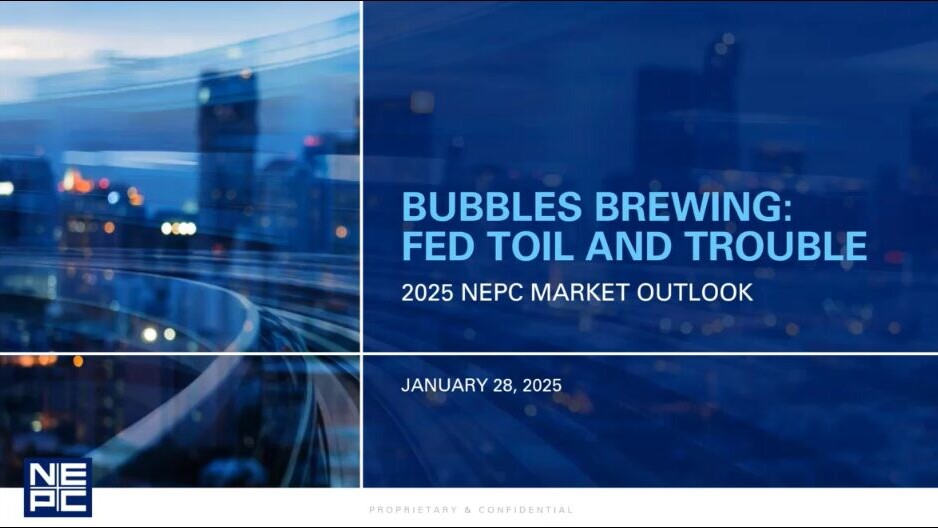NEPC’s Phillip Nelson and Tim McCusker pay homage to Byron Wein’s annual “10 Surprises” by discussing their own predictions for 2024.
Watch their full discussion or read the article below:
NEPC Chief Investment Officer Tim McCusker and Phillip Nelson, head of asset allocation, honor the late Byron Wien—known for his yearly forecast of Ten Surprises—with their predictions for the unexpected in 2024.
In coming up with our list of Market Surprises for the year, we have taken into account our investment outlook for the year and the prevailing market themes. While we stand firmly behind the extensive thematic work done by our Research team, we also recognize the intellectual importance of debating different scenarios that could play out. To be sure, these potential surprises are not our base-case views, and neither are they meant to be an investment recommendation.
This piece has been edited for brevity from the video recording above.
Here are our six 2024 Market Surprises:
1. THE FEDERAL RESERVE HIKES RATES IN 2024.
Tim: Right now, the market is pricing in five rate cuts over the course of this year and the expectation is for an economic soft landing. That said, we look back to the surprise of 2023, when economic momentum, fueled by a bull market in equities, defied expectations of a recession. The momentum could carry over to 2024 as the labor market still looks strong, and investor sentiment and liquidity remain positive. In addition, we have economic stimulus coming from Taylor Swift’s Eras tours’ streaming in March, and then the new album in April; we know how much that matters!
As for consumers and corporations, many have locked in debt when interest rates were lower, so they have immunity from the higher cost of capital and can continue spending at the same pace, as inflation cools from 2022 levels. Still, the most recent inflation reading did come in hotter than expected. In its earlier responses, the Federal Reserve has pushed off the rate cuts, sticking with keeping rates higher-for-longer, but if there’s a meaningful expectation of higher inflation, I don’t think it’s crazy that we could see a (single) rate cut instead of a set of rate drops in 2024 .
Phillip: Not a surprise that Taylor Swift was mentioned on this! A Fed hike would be a surprise. We talk about a soft landing, hard landing, perfect landing…but to what extent could the economy just overheat, or was 2023 the bottoming out of inflation? And are we now starting to see the back end of that inflation wave start to rebuild, which is certainly not something most investors are expecting.
Tim: The expectation is for a continued reduction of inflation. But it doesn’t take much for it to turn the other way when you still have job and wage growth. Also, we’ve seen geopolitical tensions and issues in the Red Sea; it doesn’t take much for supply chains to become an issue.
Oil prices have stayed under control despite the global conflict; again, it doesn’t take much for those to jump higher. You don’t need all of those to happen…just one of those things could be enough to push inflation back above 4% and create a real issue for the Fed.
Phillip: Will the market really shift its thinking? Instead of pushing out those rate cuts, will it shift to believing rates will be higher-for-longer or even price in rate hikes? It almost starts to become a direct challenge to the Fed mandate. Do you believe in a stated 2% inflation level? I think many in the market secretly do not.
2. U.S. DOLLAR PARITY WITH THE EURO AND THE BRITISH POUND
Phillip: We’re going to call it the vacation dividend. We just opened an office in London, so it’s not necessarily in our best interest that we see weakness in the pound. But for those of us that are happy to visit, a stronger dollar would be a welcome for vacationers.
The U.S. economy is clearly performing well. You contrast that with the issues we’re seeing in Europe, and maybe the central banks there either pause or start to introduce cuts quicker than the U.S. Does that higher yield or higher carry bias start to benefit U.S. dollar strength? In some ways, the dollar becomes even more of a carry trade that starts to flow through the economy. The euro, with underlying macroeconomic weakness, is exposed when we look at unemployment levels, commercial real estate stress, or consumer spending.
The same concerns apply to the U.K. Also, to what extent does commercial banking stress or commercial real estate flow into banking stress?
Tim: You mentioned weakness on a few different levels across Europe. We haven’t had to worry about it for a decade. The European region was saved by three words a decade ago when European Central Bank President Mario Draghi gave his “whatever it takes,” speech. Everyone backed off worrying about the ECB and the euro. But some of the factors you’re talking about could put some pressure on currencies in the region.
Phillip: If there is greater currency weakness in Europe, there are still good assets in Europe.
Tim: I think there’s a reason we’ve opened a London office because we want to be closer to some of the opportunities there. A further 10% or 20% discount on an asset that is maybe already under distress because the currency has fallen could get really interesting for us investors. So, that’s something we’ll be watching closely.
3. GLOBAL GRAND BARGAIN
Tim: This is the opposite of geopolitical tensions, one of our 2024 Market Themes. We do see geopolitics continuing as a long-term trend. This is the idea that in the midst of a global election cycle in 2024, what’s the #1 priority for most political leaders? It is to get re-elected. A healthy economic environment and a calm geopolitical backdrop doesn’t guarantee victory, but the opposite certainly hurts a politician’s chances. Sitting presidents, prime ministers and leaders can use different policy tools to stimulate their economies and try to drive economic growth and financial market gains.
They can also do some things on the geopolitical front. We’ve been in a world of conflict for several years now, but against that we’ve also had the undercurrent of China’s economic challenges, and the U.S. being in the middle of everything from a geopolitical perspective.
Certainly, the base case is a continuation of all this tension, but we’re seeing some movement on a potential for a ceasefire in the Middle East. We’re seeing Saudi Arabia and Israel work towards recognizing one another and looking for a bargain there. It will benefit both Chinese and U.S. leadership to get along. In the near term we could see a peace dividend. We could see a cooperation or bargain dividend in 2024, if for their own benefit, for each country’s leader’s benefit, everyone tries to get along for a little while.
Phillip: All politics is domestic and ensuring staying in power is often the #1 goal. There are places that don’t hold elections like China, where domestic politics still matter. It’s a very different form, but it’s still very present there. We’ve been debating some of these geopolitical themes, how the market will react to them…so, a peace dividend flowing through markets will be clearly beneficial even though it might not be a sustained benefit.
4. SINGLE-PARTY CONTROL OF THE U.S. GOVERNMENT
Phillip: We’ve got the presidential election in November. The Senate races are relatively close, and the House is up for election. One of the things that we are used to is a divided government, which is relatively good for markets. We’ve seen the stalemates in Washington, with no big policy changes or shifts.
There are scenarios one can draw to see how single-party control can occur. We know four or five states really matter: Arizona, Nevada, Wisconsin, Michigan and Pennsylvania.
The most important vote that we’ll see in early 2025 is the vice-presidential tiebreaker to decide who’s going to run the Senate. When we think about the House, the margins are very thin, especially after the Democrats won back the seat formerly held by George Santos.
With a unified government, we could see policy changes whether it be shifts in taxes or spending. We’re still looking at high deficits. It would be a surprise to see what a full mandate would look like.
Tim: We’ve observed over the last decade that when we’ve had a unified government, something significant gets done. But then there’s the reaction…the other party that’s not in power responds. Obamacare, and the tax cuts and jobs act from Trump are examples. Usually, markets don’t like it. So, it would probably not be a good thing for markets to have unity.
5. FOCUS OF INNOVATION IS HEALTHCARE
Tim: This is related to artificial intelligence, another one of our 2024 Market Themes, and its broad applications across all sectors of the economy. This is not counter to that concept, but a surprise we think is possible in 2024 is that the center of innovation pivots to focus more on healthcare.
We think back to the last year-and-a-half when we had a big downturn in markets in 2022…capital dried up in the venture space and a regional banking crisis with its epicenter in Silicon Valley. It looked like a cruel summer for the venture ecosystem—yes, that’s my second Taylor swift reference—unless your company had AI on its name somewhere. Innovations and artificial intelligence have been driving a lot of excitement and are behind the Magnificent 7 companies. The base case would be that this continues in 2024, but I think there’s also a lot of underlying multi-faceted momentum in healthcare.
We have the implications of weight loss drugs…there’s the direct implication for the companies that benefit from that. But the second-order implications are absolutely massive: Think of the impact on pharmaceutical companies directly, and then the shifts in individual consumption, the impact on employers paying for health care, health insurers, healthcare systems, and pensions to the extent that there’s long-term benefits and longevity. Then there is the federal budget as well…Medicare pays a lot for these drugs already that you could see an uptick in that, but long-term benefits could bring the cost of Medicare down as people have healthier lives and lifestyles.
We also have biotechnology applications of AI being able to produce novel solutions for specific innovations. We have genetic editing which has huge long-term implications and benefits for society.
I don’t know if this hits in 2024 all at once, but these are things that could happen over the next five years and will have broad application across the economy.
Phillip: How does the market handle these dynamics? You look at the healthcare industry in the last 10 years, and there are plenty of challenges on that list. We have gotten used to the disruption associated with the technology sector over the last 25 years, whether it is internet cloud computing and now AI. But what does real disruption look like in the healthcare industry as governments and markets react? It’s a fascinating dynamic.
6. STANDARD & POOR’S HITS 6,000
Tim: We’ve saved the best surprise for the last.
Phillip: At this point, it may not be a surprise! If we had said S&P at 6,000 two years ago, that would have been wildly speculative. But as we look at it now, this doesn’t seem that outlandish when we think about the potential for the index to earn 20% for the rest of the year. In the last 50 years, the S&P Index has generated returns of over 20% in 15 or so of those years. Already at the start of this year, we have seen strong returns from AI and the S&P Index. You compare this to relatively muted returns of our capital market assumptions, expecting a nominal 4% over the next 10 years. To what extent do you earn almost that entire 10-year return in a 12-month period? That’s a very real dynamic.
Our price target for the S&P 10 years from now—given cyclical shifts, margins, valuations, and there will be economic weakness at some point in the next 10 years—is roughly 6,000. In the next 12 months, there are foreseeable pathways where we could see 6,000 happen. So, a couple of scenarios to highlight: S&P price-to-earnings multiple of 24 times, not far off from where we are on a trailing basis. Earnings expectations for 2024 for the S&P is roughly $240 a share, according to FactSet. A P/E multiple of 24 with earnings per share at $250 is S&P at 6,000.
The other path to think about is that 10 of the 11 sectors are still trailing their highs. To the extent that you do have a strong economy, you know there’s potential. Could you see rallies in all the other sectors? Excluding the Magnificent 7, could you see the rest of the 493 names start to pick up performance and generate stronger returns? That would be a more welcome shift to a full-bodied equity performance as opposed to the concentration that we’re seeing in the S&P today.
Something to be cognizant of is how much diversification is needed in U.S. large-cap equities, with the Mag 7 at 30% of the S&P? We could certainly see them get to 40%-plus. We have started asking ourselves how wary do we need to be of concentration risk?
Tim: We’ve seen this movie before. When you get to those levels of concentration—whether it’s the technology sector in the late 1990s, or Japan, as part of the international equity index or global equity index, in the late 1980s and early 90s—those levels of sector concentration only happened with some form of bubble activity.
So, to the extent the S&P at 6,000 is heavily driven by a narrow group of companies, it’s nice to capture that price momentum in your portfolios. But we really have to think about shifting portfolios at that point, because that’s probably leading us towards a bad outcome.
Phillip: One of the challenges of bubbles is predicting when they end, and there’s a poor track record for all of us and market participants in identifying them. Over a longer-term horizon, you take a measured approach…be willing to not earn all the gains you might earn in this next year, and benefit in coming years with a more defensive posture. We think that’s prudent positioning for folks looking out over the next year or so.
Tim: It’s important to reflect on what the implications are of these surprises. Any investor or advisor, when they’re publishing their annual outlook, has to have conviction in their views. Whether it’s the themes, or the assumptions that we have over a longer-term horizon for every asset class. These surprises here today help to bring to life different paths that the market and economies could follow.
Thinking of surprises that could happen over the course of this year or following years helps you think through how your portfolio might withstand different types of environments and helps us as we build diversified investment programs.
So, I think this is a great way to think through the resilience and robustness of your portfolio, and the gaps. If you have questions, please reach out to your NEPC team. We’re happy to spend more time talking about this.



